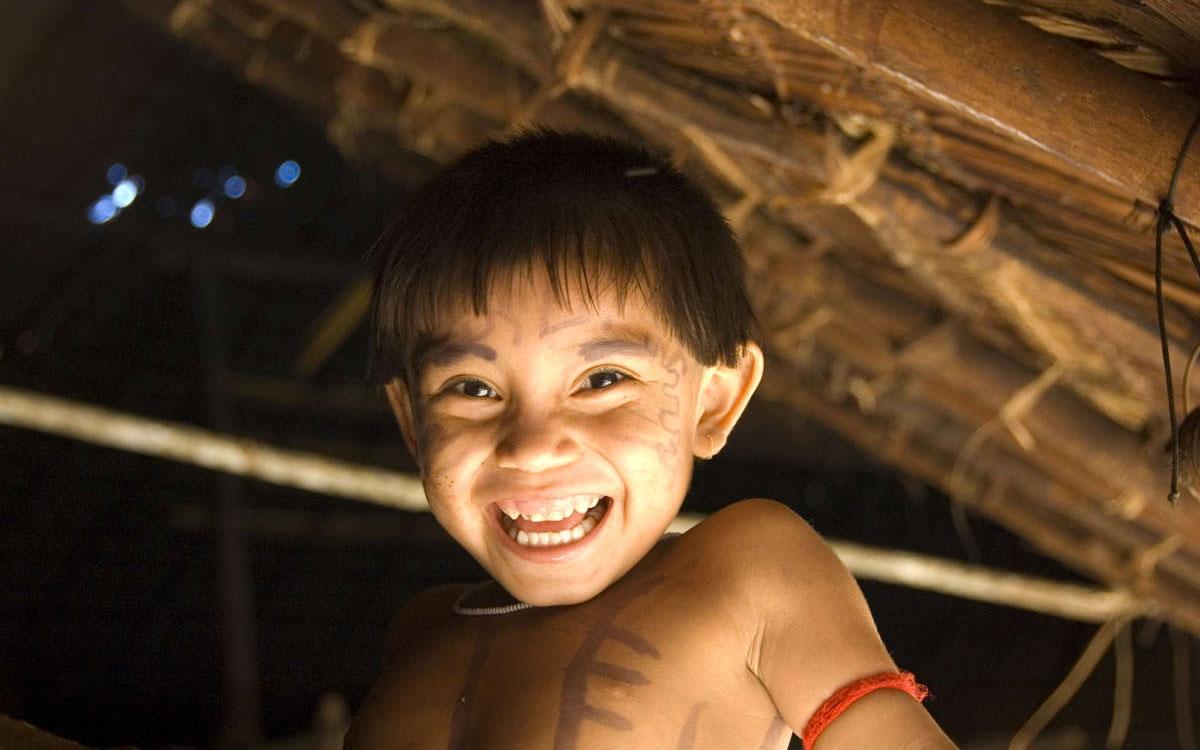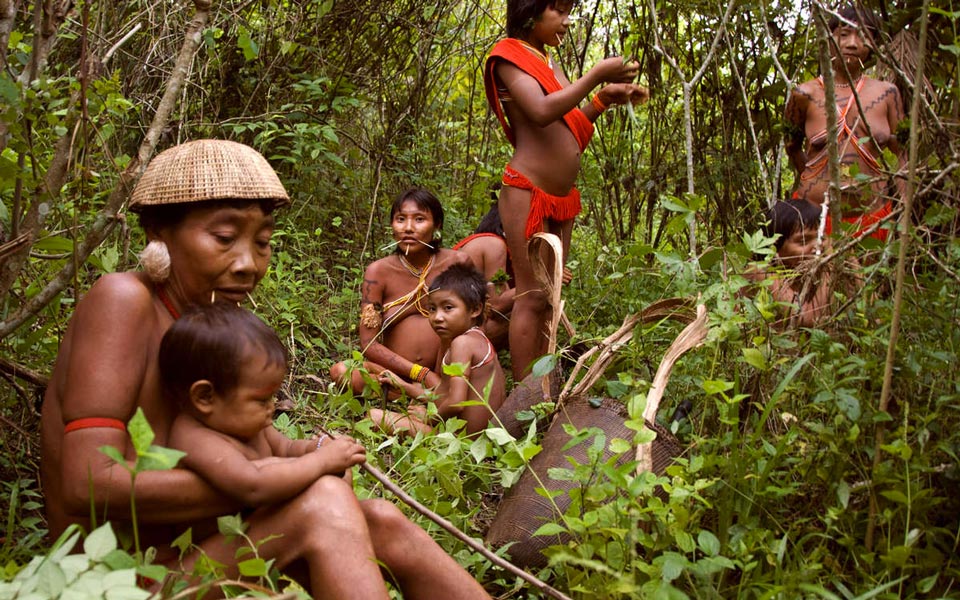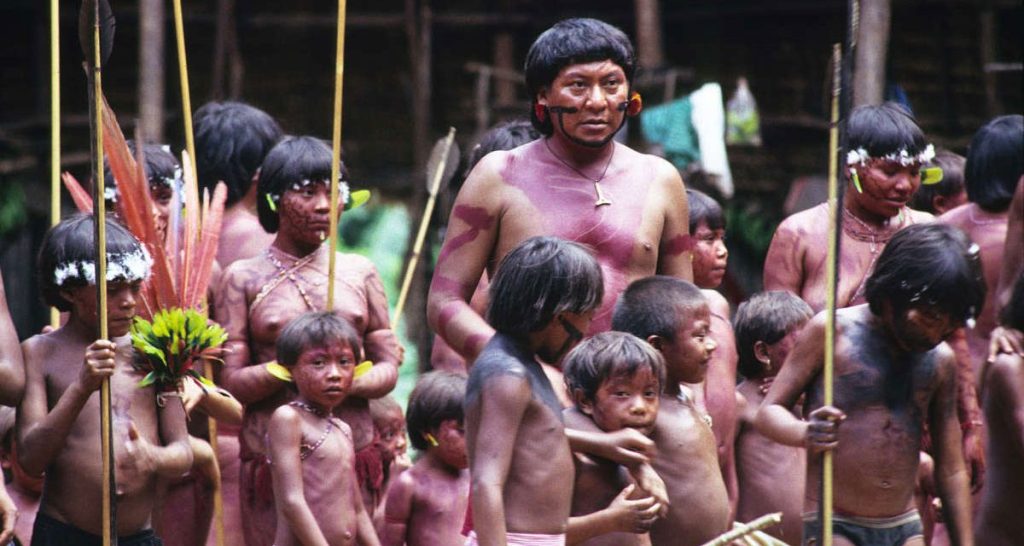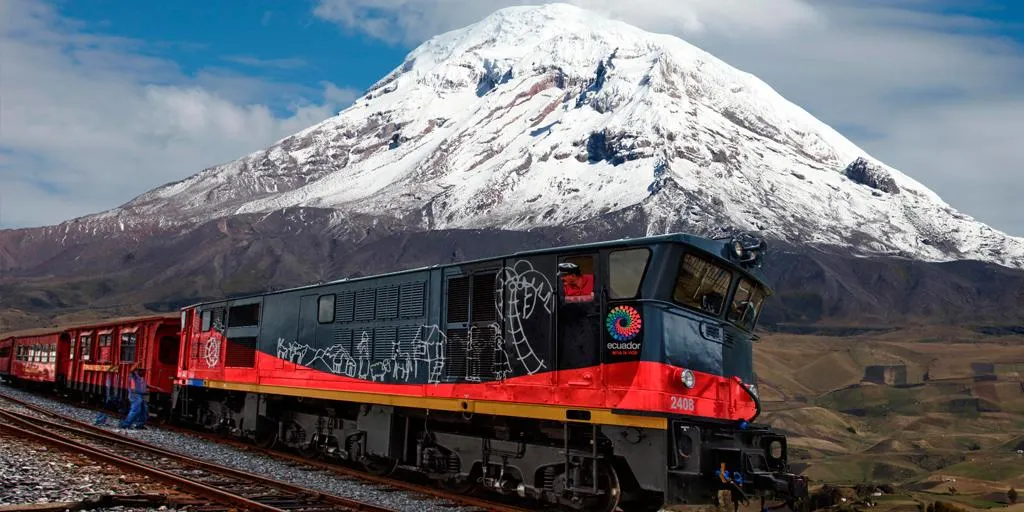Texte et photos de Survival International – Cet article a été publié initialement sur le site www.elcafelatino.org
Survival International est le mouvement mondial pour les droits des peuples autochtones. Une organisation exclusivement consacrée à la défense des peuples autochtones du monde entier afin de défendre leurs vies, protéger leurs terres et déterminer leur propre avenir.
Le célèbre chamane yanomami Davi Kopenawa, surnommé le « dalaï-lama de la forêt amazonienne », a remporté cette année le Right Livelihood Award, connu également sous le nom de « Prix Nobel alternatif ».
En 2010, il a écrit La chute du ciel, le premier livre écrit par un Yanomami. Il y explore la cosmologie yanomami et décrit avec émotion la lutte de son peuple pour survivre aux épidémies et à la violence. Le directeur de Survival International, Stephen Corry, en a parlé comme « l’un des livres les plus importants de notre époque ».
Au pays des Blancs
Quand j’ai vu l’Europe, le pays des Blancs, j’étais en détresse. Certaines villes sont belles mais le bruit ne s’arrête jamais. Ils les parcourent avec des voitures, dans la rue et même avec des trains souterrains. Il y a beaucoup de bruit et les gens partout. L’esprit devient sombre et enchevêtré, on ne peut plus penser droit. C’est pourquoi les pensées des Blancs sont pleines de vertiges et ils ne comprennent pas nos mots. Tout ce qu’ils disent, c’est : « Nous sommes très heureux de rouler et de voler ! » Nous allons continuer ! Cherchons du pétrole, de l’or, du fer ! La pensée de ces blancs est obstruée, c’est pourquoi ils maltraitent la terre, la dépouillant de partout, et ils la creusent même sous leurs maisons. Ils ne pensent qu’un jour, il finira par s’effondrer.

Nous, nous voulons que la forêt soit maintenue telle quelle, toujours. Nous voulons y vivre en bonne santé et nous voulons que les esprits xapïripë (chamaniques), le gibier et les poissons continuent à y vivre. Nous ne plantons que les plantes qui nous nourrissent, nous ne voulons ni usines, ni trous dans le sol, ni rivières sales. Nous voulons que la forêt reste calme, que le ciel reste dégagé, que la nuit tombe vraiment et que les étoiles soient visibles.
Les terres des Blancs sont polluées, elles sont couvertes par une épidémie de fumée qui s’est étendue très haut au ciel. Cette fumée nous parvient mais ne nous est pas encore parvenue, car l’esprit céleste Hutukarari la repousse sans cesse. Les Blancs ne pensent jamais à ces choses que les chamans savent, c’est pourquoi ils n’ont pas peur. Leur pensée est remplie d’oubli.
Rêves des origines
Les esprits xapiripë (chamaniques) dansent pour les chamanes depuis la nuit des temps et continuent de le faire maintenant. Ils ressemblent à des êtres humains mais sont aussi minuscules que des particules de poussière brillante. Pour les voir, il faut inhaler plusieurs fois la poudre de l’arbre yãkahanahi.
Les xapiripë dansent ensemble sur de grands miroirs qui descendent du ciel. Ils ne sont jamais gris comme les humains. Ils sont toujours magnifiques : leurs corps sont peints d’urucum (latté) et ornés de dessins noirs, leur tête est recouverte de plumes blanches de vautour mauve, leurs sangles de bras perlées sont pleines de perroquet, de cujubim (un type d’oiseau) et de rouge les plumes de l’ara, leur taille sont enveloppées avec des queues de toucans.
Des milliers d’entre eux viennent danser ensemble, agitant les feuilles de jeunes palmiers, émettant des cris de joie et chantant sans cesse. Leur trajectoire ressemble à du fil d’araignée étincelant au clair de lune et leurs ornements en plumes se déplacent lentement au rythme de leurs pas. C’est une joie de voir à quel point ils sont beaux !
Les esprits sont si nombreux car ce sont les images des animaux de la forêt. Tout dans la forêt a une image utupë: ceux qui marchent sur le sol, ceux qui grimpent dans les arbres, ceux qui ont des ailes, ceux qui vivent dans l’eau. Ce sont ces images que les chamanes appellent et font descendre pour devenir des esprits xapiripë.

Ces images sont le véritable centre, le véritable intérieur des êtres de la forêt. Les gens du commun ne peuvent pas les voir, seulement les chamanes. Mais ce ne sont pas des images des animaux que nous connaissons aujourd’hui. Ce sont les images des pères de ces animaux, ce sont les images de nos ancêtres. Dans un premier temps, lorsque la forêt était encore jeune, nos ancêtres étaient des humains portant le nom d’animaux et ont fini par devenir une proie. Ce sont eux que nous tuons avec des flèches et mangeons aujourd’hui. Mais leurs images n’ont pas disparu et ce sont eux qui dansent pour nous en tant qu’esprits xapiripë.
Les Blancs dessinent leurs mots parce que leurs pensées sont remplies d’oubli. Nous avons gardé les paroles de nos ancêtres en nous pendant longtemps et nous continuons à les transmettre à nos enfants. Les enfants qui ne connaissent rien aux esprits entendent les chants des chamanes et veulent ensuite les voir à leur tour. C’est ainsi que, même s’ils sont très anciens, les mots du xapiripë redeviennent toujours nouveaux. Ce sont eux qui augmentent nos pensées. Ce sont eux qui nous font voir et savoir les choses lointaines, les choses anciennes. C’est notre étude qui nous apprend à rêver.








